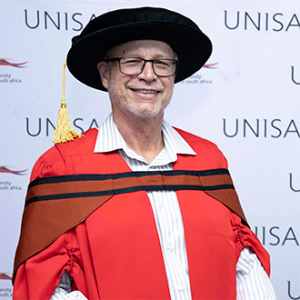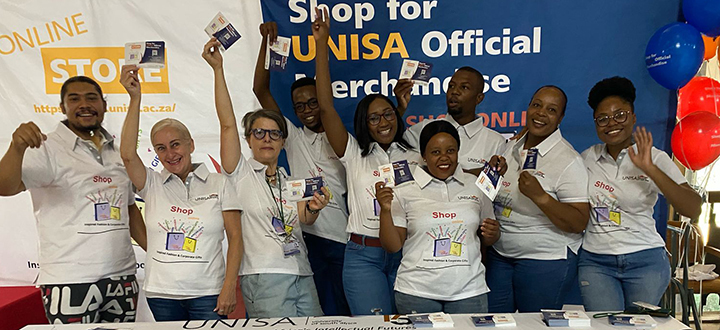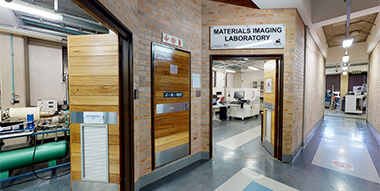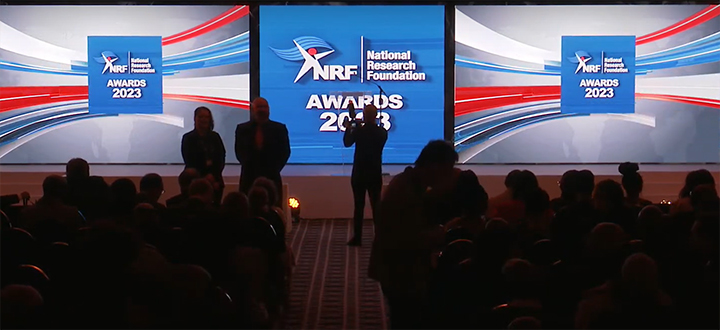College of Agriculture & Environmental Sciences
Unpacking crime through geography
Unisa hosted a highly anticipated inaugural lecture by Prof Peter Schmitz on 25 February 2025, in which he shed light on the fascinating intersection of geography and forensic science. The virtual event, held on MS Teams, brought together academics, law enforcement professionals and forensic experts to explore the role of geoforensics and forensic geography in crime investigations.
Watch a recording of the lecture

Prof Peter Schmitz
Schmitz, a Professor of Geography in the College of Agriculture and Environmental Sciences at Unisa, delivered an insightful lecture that showcased his extensive research and practical contributions to the field. The session was responded to by Tinus Kruger, Executive Director of the International Crime Prevention through Environmental Design (CPTED) Association and principal researcher at the Council for Scientific and Industrial Research .
Bridging geography and forensics
In his address, Schmitz took the audience through the foundations of geoforensics, tracing its origins back over 200 years to early applications in India and China, where footprints were used to track suspects. He highlighted how geoforensics has since evolved into a sophisticated discipline that integrates geology, remote sensing, geographic information system (GIS) applications and forensic geophysics to aid criminal investigations.
Geoforensics, as defined in his presentation, applies geoscience methods – including geology, mineralogy, soil science, hydrology and remote sensing – to forensic cases. Similarly, forensic geography employs spatial analysis, geographic profiling and GIS applications to uncover crucial insights in criminal investigations.
The lecture emphasised the application of geoforensics in both terrestrial and aqueous environments, where tools such as light detection and ranging (LiDAR), ground-penetrating radar (GPR), drones and sonar are employed to analyse crime scenes and locate evidence.
Real-world impact: Case studies and investigations
A key highlight of Schmitz’s presentation was the discussion of real-life applications, including his role as an expert witness in high-profile court cases. He detailed investigations where forensic geography played a pivotal role by, among others, tracking the movements of serial offenders and identifying crime hotspots through geographic profiling.
One compelling case study focused on the Mine Dump Serial Killer, where geospatial tools helped track the suspect’s patterns, leading to his "residence" – thus proving to the detectives the effectiveness of these tools. The discussion underscored how forensic geography bridges the gap between data analysis and law enforcement operations.
The way forward for forensic geography in South Africa
In his concluding remarks, Schmitz stressed the urgent need to expand geoforensics and forensic geography offerings at South African universities. Given the country's high crime rate, he emphasised that these disciplines could serve as invaluable tools for crime prevention, investigation and justice delivery.
Kruger, echoed these sentiments, highlighting how crime prevention strategies such as CPTED can be enhanced through forensic geography methodologies.
A landmark lecture with far-reaching implications
The inaugural lecture not only celebrated Schmitz’s achievements but also reinforced the transformative potential of geoforensics in South Africa’s criminal justice system. As the field continues to evolve, Unisa remains committed to fostering cutting-edge research and knowledge dissemination, ensuring that forensic geography becomes an integral part of crime investigation and justice.
He co-authored a chapter on geoforensics in the newly released second edition of Forensic investigation: Legislative principles and investigative practice, published by Juta.
* By Gugu Masinga, Communication and Marketing Specialist, College of Agriculture and Environmental Sciences, with input from ChatGPT
Publish date: 2025/03/05

 Unisa co-hosts G20 community outreach in the Eastern Cape
Unisa co-hosts G20 community outreach in the Eastern Cape
 Unisans gain membership of prestigious science academies
Unisans gain membership of prestigious science academies
 Advocating for disability transformation through servant leadership
Advocating for disability transformation through servant leadership
 Unisa Press continues to illuminate the publishing space
Unisa Press continues to illuminate the publishing space